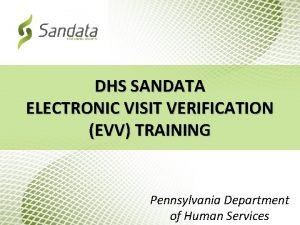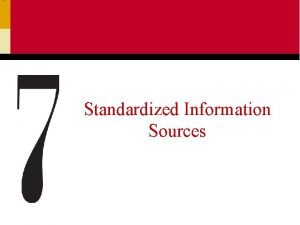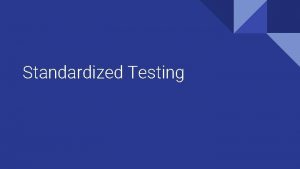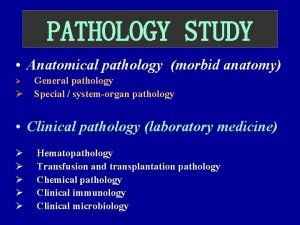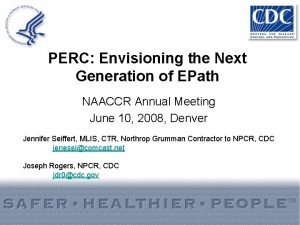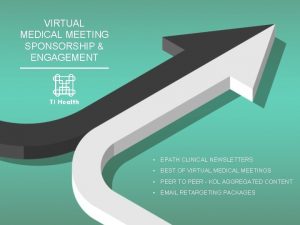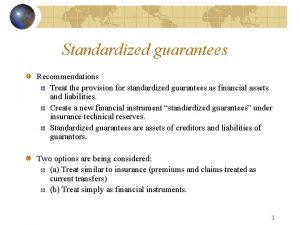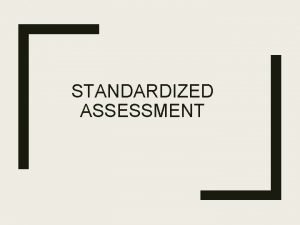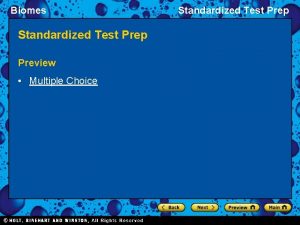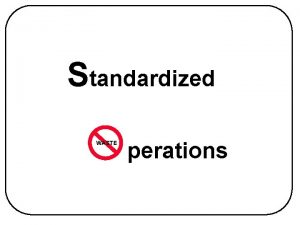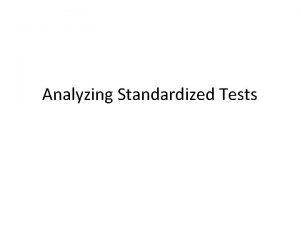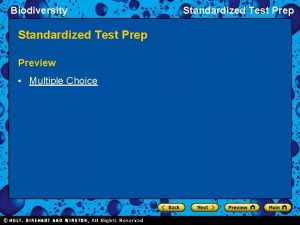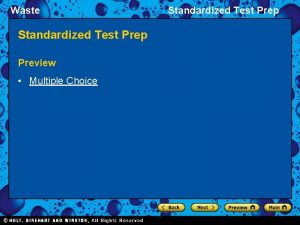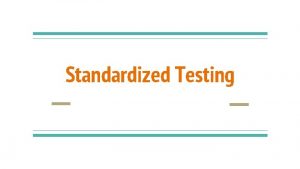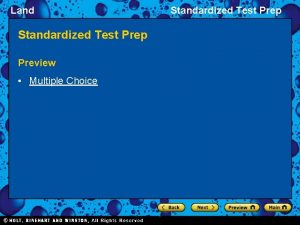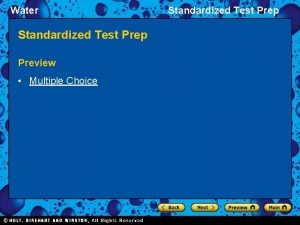THE NEW WORLD OF STANDARDIZED ELECTRONIC PATHOLOGY EPATH





















- Slides: 21

THE NEW WORLD OF STANDARDIZED ELECTRONIC PATHOLOGY (E-PATH) REPORTING Eric B. Durbin, MS Jovanka N. Harrison, Ph. D NAACCR Pathology Data Work Group NAACCR Annual Conference June 16, 2009 San Diego, California

Overview • • • Importance of data standards History of NAACCR E-Path standards NAACCR HL 7 E-Path messages Synoptic reporting Conformance testing Diffusion of NAACCR E-Path Standards

Who Needs Standards for Electronic Pathology Reports? • 95% of all cancer cases are microscopically confirmed in a pathology report • Data standards facilitate transmission of critical pathology data from pathology labs to cancer registries • Improves registry accuracy and efficiency – One interface fits all • Reduces costs – One interface fits all

History of E-Path Data Standards • NAACCR Pathology Data Work Group • Data Standards for Cancer Registries – Pathology Laboratory Electronic Reporting • • • September 2000 (Volume II, Chapter 6) November 2005 (Volume V, Version 2. 0) May 2008 (Volume V, Version 2. 1) February 2009 (Volume V, Version 2. 2) June 2009 (Volume V, Version 3. 0) • URL – http: //www. naaccr. org/index. asp? Col_Section. Key=7&Col_Content. ID=122

Size of NAACCR E-Path Standard Specifications 350 300 Pages 250 200 150 100 50 0 2005 2008 2009

Acknowledgements

NAACCR Volume V • Chapter 2: Implementation Guide for Transmission of Laboratory-Based Reports to Cancer Registries Using Version 2. X of the HL 7 Standard Protocol • Volume V Version 2. 1 (May 2008) – HL 7 Version 2. 3. 1 • Volume V Version 3. 0 (June 2009) – HL 7 Version 2. 5. 1

Why Health Level Seven (HL 7)? • Flexible and robust protocol • Widely utilized for electronic data transmissions – Electronic Medical Record (EMR) systems – Pathology Laboratory Information Systems (LIS) • Widely utilized in – US – Canada – Europe • Federal mandates likely on the horizon

NAACCR Pipe-Delimited Format • Not widely utilized – Limited cancer registries – Limited pathology LIS systems • Less sophisticated (less technically challenging) • Retained for legacy e-path reporting systems • May be used alone or in conjunction with HL 7

NAACCR Volume V: Chapter 2 HL 7 Implementation Guide • Defines HL 7 messages for transmitting pathology reports to cancer registries • Specifies how to encode path report data elements • Defines requirement status for each HL 7 field – (R) Required – (RE) Required but may be empty – (C) Conditional – (CE) Conditional but may be empty – (X) No supported

HL 7 Basics: Delimited, Positionally Defined Data Fields • HL 7 messages are ASCII text • All data fields are delimited by a specified separators • Delimiters defined at beginning of message – Fields usually delimited by ‘|’ (pipe) character – Sub-fields usually delimited by ‘^’ (hat) character • Standard for each field position specifically defined

HL 7 Basics: Segments • Various HL 7 segments carry categories of information • Each segment type identified by three character id at the beginning of the segment – MSH, PID, ORC, OBR, OBX, SPM • Some segments types are optional • Some can be repeated – Repeats are sequentially numbered OBX|1|TX|22637 -3^FINAL DIAGNOSIS^LN^^DIAGNOSIS^L|1|LEFT INGUINAL LYMPH NODE - GRANULOMATOUS LYMPHADENITIS||||||F<CR> OBX|2|TX|22637 -3^FINAL DIAGNOSIS^LN^^DIAGNOSIS^L|1|/ljm <CR> OBX|3|TX|^^^^Clinical History^L|2|? lymphoma Quick Section||||||F<CR>

NAACCR HL 7 E-Path Message Structure

HL 7 E-Path OBX Segment • Observation/Result (OBX) Segment – Specific observation identifier or “question” (OBX-3) • Identified by LOINC or SNOMED Codes – Specific observation or “answer” (OBX-5) • Primarily narrative text



Next Steps: Encoded Synoptic E-Path Reports • College of American Pathologists (CAP) define standard Cancer Protocols and Checklists for all pathology reports – http: //www. cap. org/ • Protocols and checklists specified by site and procedure – Breast, Colon and Rectum, Lung, Prostate, etc. – Biopsy, resection, etc. • Pathologists follow CAP Protocols when evaluating specimens • Computerized, “synoptic” reports contain discrete encoded data elements • NAACCR HL 7 standard can accommodate encoded synoptic pathology reports

NAACCR HL 7 Conformance Testing and Validation • HL 7 Messaging Workbench (MWB) – Standalone software application for validating the conformance of HL 7 messages • Can be used by vendors and registries to validate E-Path HL 7 messages • Profile for NAACCR HL 7 standard available on NAACCR web site

Real World Implementations of NAACCR HL 7 Standard • CAP survey of 25 LIS vendors – Published in February 2009 – Use of NAACCR standards to report to tumor registries or public health agencies http: //www. cap. org/apps/docs/cap_today/0209_CAPTODAY_Anat. Pathol_Prod. Guide. pdf Electronic Interface Description (N=25) Number (%) NAACCR Volume V Version 2. 1 Available 11/17 (65%) NAACCR Volume V Version 2. 1 Installed 4/17 (24%) Older NAACCR Standard Installed 8/17 (47%) Non-Standard Interface Installed 10/17 (59%) No Answer 8 /25 (32%)

Fruits of Our Labors New PHINMS E-Path transmissions to Kentucky Cancer Registry: “I consulted Volume V and found everything I needed. ” » Dr. Sally Bushhouse » Minnesota Cancer Surveillance System » June 16, 2009

Contact Information Eric B. Durbin, MS Director of Cancer Informatics Markey Cancer Control Program/Kentucky Cancer Registry Markey Cancer Center University of Kentucky 2365 Harrodsburg Rd, Ste A 230 Lexington, KY 40504 -3381 ericd@kcr. uky. edu (859)219 -0773 x 223
 Epath pathology
Epath pathology Scrip exchange
Scrip exchange Electronic field production
Electronic field production Site:slidetodoc.com
Site:slidetodoc.com New world to old world columbian exchange
New world to old world columbian exchange Philippine government accounting
Philippine government accounting Sandata training
Sandata training Hình ảnh bộ gõ cơ thể búng tay
Hình ảnh bộ gõ cơ thể búng tay Bổ thể
Bổ thể Tỉ lệ cơ thể trẻ em
Tỉ lệ cơ thể trẻ em Gấu đi như thế nào
Gấu đi như thế nào Tư thế worm breton
Tư thế worm breton Hát lên người ơi
Hát lên người ơi Môn thể thao bắt đầu bằng từ chạy
Môn thể thao bắt đầu bằng từ chạy Thế nào là hệ số cao nhất
Thế nào là hệ số cao nhất Các châu lục và đại dương trên thế giới
Các châu lục và đại dương trên thế giới Công thức tiính động năng
Công thức tiính động năng Trời xanh đây là của chúng ta thể thơ
Trời xanh đây là của chúng ta thể thơ Mật thư tọa độ 5x5
Mật thư tọa độ 5x5 Phép trừ bù
Phép trừ bù độ dài liên kết
độ dài liên kết






